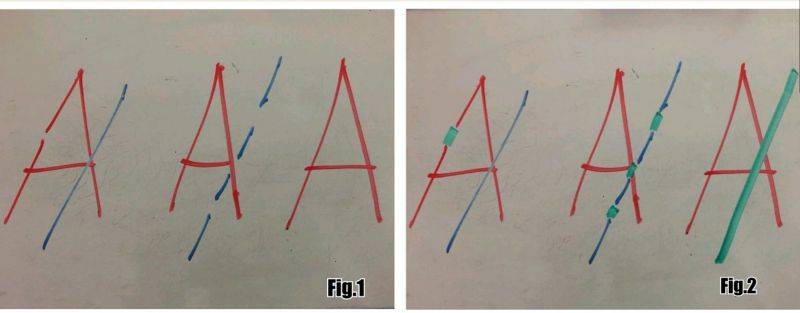The big Other and the three clinical structures.
The big Other and the three clinical structures. PARIS 9
Fernando de Amorim
Paris, October 17th 2016
It is impossible to grow up while remaining attachedto a binary discourse, to the imaginary relation. In order to become an adult, the child must extirpate herself from her relationship to her parents. The first extirpation into the Real must be followed by an imaginary gap.
In the first case one identifies the scalpel, in the second, symbolic castration.
Through structure, the parents represent the big O. In the figure below (Fig.1), the first capital O —deprived of part of its structure — represents the big Other in psychosis. I will not seek to establish whether one or other or both parents are psychotic. My premise is that this is the big Other the child has chosen to embody. Likewise for neurosis and perversion. The second big O, with a discontinuous blue bar, represents the big Other in neurosis. Finally, the complete, unbarred big Other stands for the big O in perversion.
One might, in the latter scenario, identify masochism bearable for the being, to the point of not seeking help from analysts, mental health practitioners —psychologists, psychiatrists, psychotherapists— and psychoanalysts, to the point of extremepsychopathy, as in the case of aggressors and rapists of the weak (children, women, the elderly), and murderers.
In this way, figure 1 represents the state of the big Other in psychosis, neurosis and perversion, at the point when a) the patient first arrives for consultation (this is a hypothesis), but above all when b) the clinician arrives at a diagnosis —a diagnosis confirmed on the basis of the patient’s, and to an even greater degree the psycho-analysand’s, utterances — in the form of free association. In this scenario, the utterances fall like ripe fruit.
The clinician must not be overly concerned with the ego. The latter is there to disrupt the operation. But one must put up with this troublesome, rude and, above all, unavoidable moocher.
Once a diagnosis has been established, the clinician’s aim, in the case of the psychotic, is, at the end of psychoanalysis, to have built a tombolo to enable the ego to live socially (Fig.2). In the case of the neurotic, the aim is to construct, with the needle of castration and the thread of free association, the bars of the Other by making sutures of castration. In the case of the pervert, the aim is to construct a harbor — a natural or man-made dock where boats can shelter — in order that, at the end of psychoanalysis, the subject might moor up, mooring being a nautical term designating a secure shelter for embarkation.

